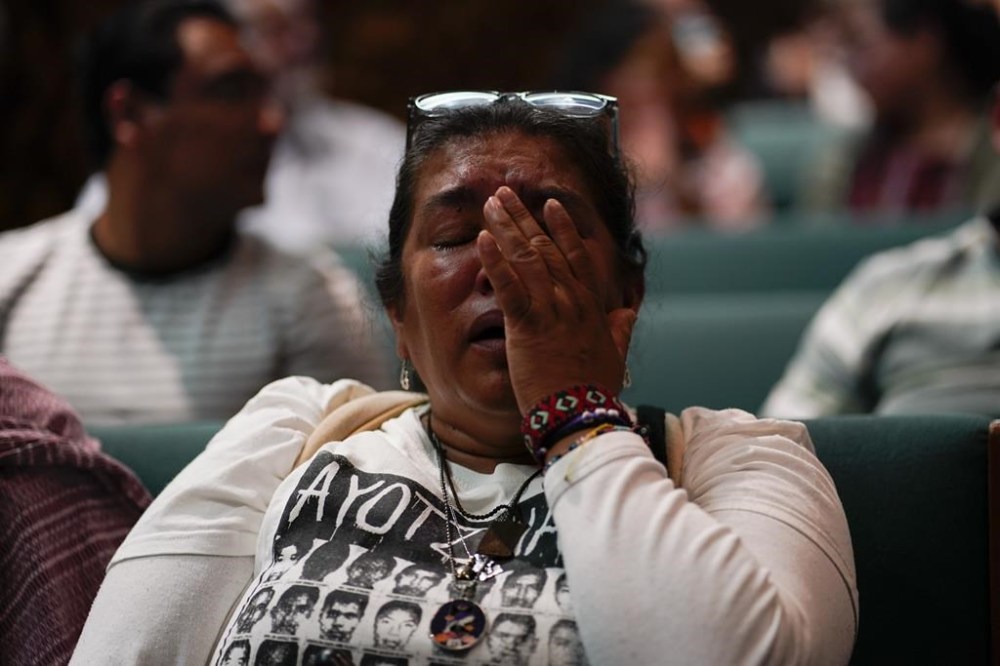Outside experts’ last report raises questions about military’s role in disappearance of 43 students
Advertisement
Read this article for free:
or
Already have an account? Log in here »
To continue reading, please subscribe:
Monthly Digital Subscription
$0 for the first 4 weeks*
- Enjoy unlimited reading on winnipegfreepress.com
- Read the E-Edition, our digital replica newspaper
- Access News Break, our award-winning app
- Play interactive puzzles
*No charge for 4 weeks then price increases to the regular rate of $19.00 plus GST every four weeks. Offer available to new and qualified returning subscribers only. Cancel any time.
Monthly Digital Subscription
$4.75/week*
- Enjoy unlimited reading on winnipegfreepress.com
- Read the E-Edition, our digital replica newspaper
- Access News Break, our award-winning app
- Play interactive puzzles
*Billed as $19 plus GST every four weeks. Cancel any time.
To continue reading, please subscribe:
Add Free Press access to your Brandon Sun subscription for only an additional
$1 for the first 4 weeks*
*Your next subscription payment will increase by $1.00 and you will be charged $16.99 plus GST for four weeks. After four weeks, your payment will increase to $23.99 plus GST every four weeks.
Read unlimited articles for free today:
or
Already have an account? Log in here »
Hey there, time traveller!
This article was published 25/07/2023 (839 days ago), so information in it may no longer be current.
MEXICO CITY (AP) — The last report submitted by a panel of outside experts Tuesday raised further questions about the Mexican military’s role in the 2014 disappearance of 43 students.
The panelists said they had located photos of two dead bodies with the heads or hands bound in a way that was similar to the method Mexican marines used on other suspects.
They also found photos of other arrested people – apparently linked to the students’ abduction – who have not been heard from since they were detained. It has long been acknowledged that prosecutors and military personnel tortured some of the original suspects into confessing; many of those suspects later had charges against them dismissed.

They also found photos of suspects in the students’ abduction who have not been heard from since they were detained. It has long been acknowledged that prosecutors and military personnel tortured some of the original suspects into confessing; many of those suspects later had charges against them dismissed.
The experts were asked in 2015 to investigate the abduction of the students, who attended a rural teacher’s college in southern Mexico, after police, prosecutors and the military botched the investigation into their fate.
Corrupt local police abducted the students from buses in Iguala on Sept. 26, 2014, and turned them over to a local drug gang, which allegedly burned their bodies. Bits of burned bone found in different locations have been matched to three of the missing students.
Recent revelations suggest the abductions may have involved military collusion with drug traffickers.
“The evidence demonstrates that several authorities knew what was happening or had important information that has not been provided, perhaps because they thought it could expose their personnel who might have been involved,” according to the final report presented Tuesday.
The panel is down to two members out of its original five.

“It is not possible to continue,” Carlos Beristain, one of the outside experts, said. “The hiding of things and the obvious insistence on denying things have prevented getting to the truth.”
The government was slow to investigate possible military involvement, but about a dozen soldiers who served in the southern city of Iguala at the time of the mass abduction have been detained and face various charges for their possible involvement in the events. So far, it does not appear any marines were detained. In Mexico, marines serve under the navy.

